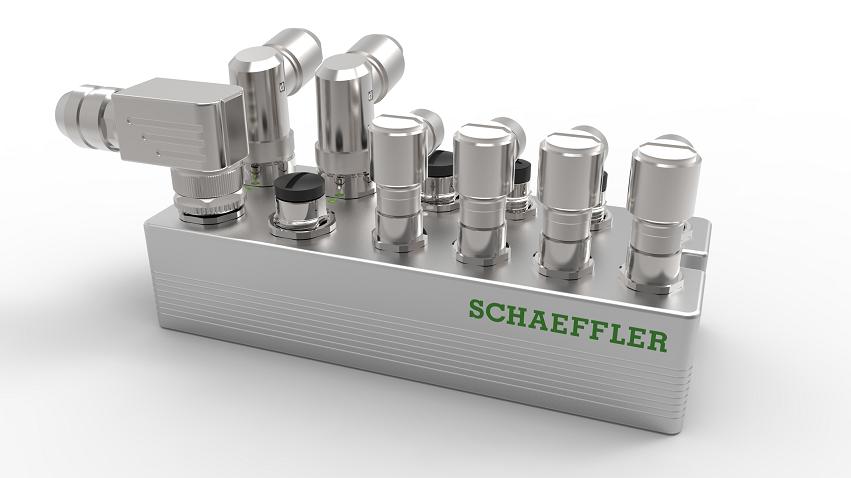Certain items of auxiliary equipment are put into operation and then forgotten about, including lubricated systems.
If no unexpected failures occur, the lubrication intervals and lubricant quantities that were initially defined generally go unquestioned.
In this context, a requirements- and load-based lubricant supply – which can be achieved with Schaeffler DuraSense – offers enormous potential for extending machine operating times and reducing maintenance costs.
The innovative DuraSense system comprises a guide carriage with sensors that are specifically developed for this application, as well as an electronic evaluation unit that allows up to seven sensors to be connected for monitoring the lubrication conditions of the guide carriage.
During a defined reference run, the lubrication conditions for each guide carriage are continuously recorded from the vibration energy that is emitted.
These conditions are checked against a limit value known as the ‘lubrication indicator’. If this limit value is exceeded, relubrication takes place.
Three relubrication options
Schaeffler DuraSense provides three different methods of relubrication. In its basic development stage, the system can be used to monitor, assess and, if necessary, optimise manual relubrication or interval lubrication systems.
The Schaeffler DuraSense sensors and the relubrication system work independently in this case.
In the automatic variant, the Schaeffler DuraSense sensors and the lubrication system are connected in a single control feedback loop.
Fixed lubrication intervals are omitted and the lubrication system is activated only according to the lubrication indicator.
Suitable lubrication systems include both Schaeffler products such as the Concept2 and Concept8 automatic lubricators, and central lubrication systems.
There are two ways in which lubricating impulses can be triggered. The first is for the evaluation unit to deliver 24V trigger signals for each of the seven channels.
The 24V outputs can be connected to both the relubrication units and the machine control system. The second option allows the lubrication indicator value to be emitted as a 4-20mA signal for each of the seven channels as an alternative to 24V signals.

Using this variant makes it possible for lubrication conditions to be continuously monitored, the relubrication function to be adjusted with even greater flexibility, and the signal used for further analyses such as calculating the future remaining useful life.
In addition to the two analogue outputs, from the second half of 2019, Schaeffler DuraSense will also feature digital fieldbus protocols. This will enable anybody to configure the selection of the outputs, as well as the type and number of carriages using a new software program.
Manifold benefits with a simple system design
With Schaeffler DuraSense, both insufficient lubrication and over-greasing are reliably prevented, resulting in lubricant savings of up to 30% achieved at optimum load, as well as reducing the number of failures caused by contamination.
The latter is due to the fact that, if foreign bodies enter the carriage due to contamination or the carriage is contaminated by a liquid medium, lubrication impulses are triggered for as long as it takes for the contamination to be flushed from the carriage.
Without this control loop, the linear guidance system would remain in operation with contamination in the rolling contacts until the next planned re-lubricating interval – and so would suffer corresponding initial damage, perhaps even severe damage.
Schaeffler DuraSense also reliably detects relubrication system failures, eg due to defective lubrication units, leaking hoses, or blocked lubricating nipples, by correlating the relubricating impulses and the subsequent vibration signals.
Complex monitoring using pressure sensors such as those used in centralised lubricating systems is not required.
The new system therefore optimally protects even heavily interconnected systems against very costly downtime.
 Engineer News Network The ultimate online news and information resource for today’s engineer
Engineer News Network The ultimate online news and information resource for today’s engineer





